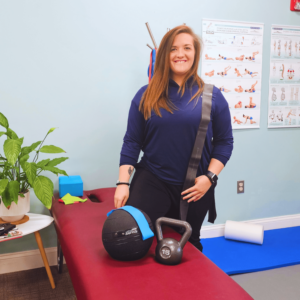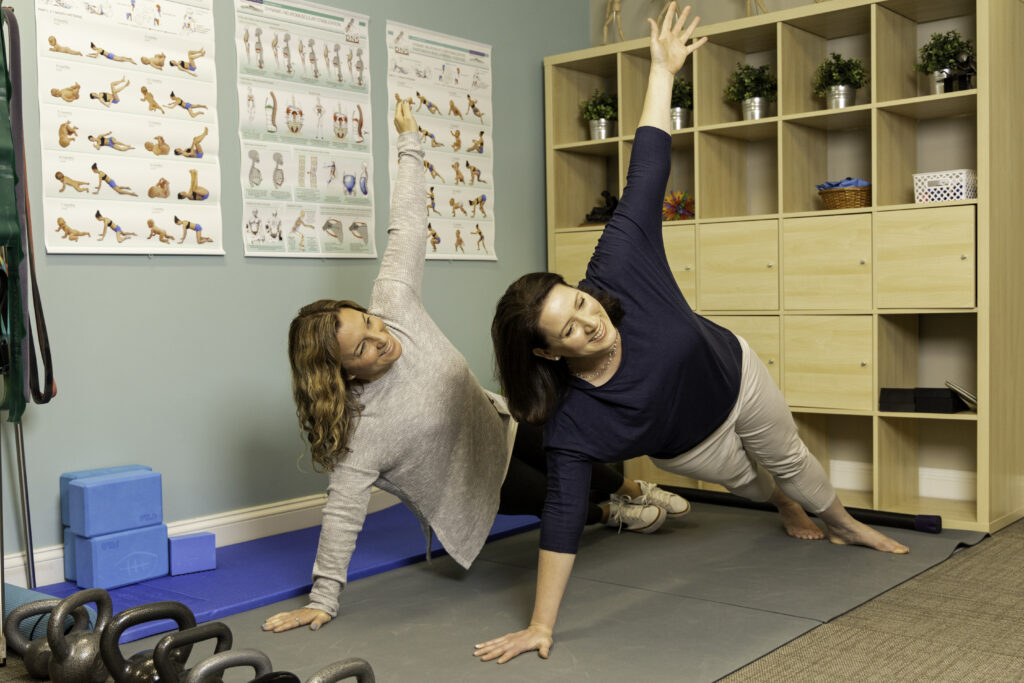Understanding the Link Between Knee Pain, Hip, and Ankle Health
Are you dealing with knee pain?
Knee pain is widespread in the United States, affecting millions of people each year. Studies estimate that around 25% of adults experience knee discomfort at some point in their lives, making it one of the most prevalent complaints related to musculoskeletal issues.
Several factors contribute to the widespread occurrence of knee pain, including:
- Aging: Knee distress becomes more common as people age, with conditions like osteoarthritis affecting many older adults.
- Obesity: Carrying excess weight places additional stress on the knee joints, contributing to pain and degeneration.
- Injuries: Sports-related injuries, such as ligament tears (ACL, MCL) or meniscus damage, can contribute to the development of knee soreness and pain in active individuals (but it’s not always the cause!)
- Chronic Inflammation from poor nutrition and chronic stress can affect the strength and stability of your muscles, tendons, and ligaments.
There are a lot of misconceptions about knee pain. Some of the most common are:
“Knee pain means I need surgery”
Many people believe that knee pain, especially chronic or severe pain, automatically requires surgery. In reality, most knee pain can be treated conservatively through chiropractic care, strength and mobility exercises, or lifestyle modifications. Surgery is often a last resort and is only necessary in certain cases of injury or advanced degeneration.
“Rest is the best solution for knee pain”
While rest can be necessary for acute injuries, like when something is genuinely torn or broken and needs time to heal, prolonged inactivity can actually worsen knee pain by causing muscle weakness, stiffness, and reduced mobility. Engaging in gentle mobilization exercise and strengthening surrounding muscles can often alleviate pain and improve function.
“My knee pain is because of ‘wear and tear,’ so I should avoid using it”
If you can’t bend your knees, how will you get on and off the toilet when you’re older?
The reality is , “If you rest, you rust.” The idea that knee pain is solely due to “wear and tear” and that continued use will make it worse can be a dangerous suggestion. Motion is lotion, and completely avoiding activities can lead to joint stiffness and weakness, exacerbating the problem.
These misconceptions can cause unnecessary fear and limit treatment options, so it’s important to address knee pain with a balanced approach that focuses on movement, strength, and overall body mechanics.
The Importance of Evaluating Your Entire Body
The toe bone’s connected to the foot bone,
The foot bone’s connected to the ankle bone,
The ankle bone’s connected to the leg bone,
Now shake dem skeleton bones!
The leg bone’s connected to the knee bone,
The knee bone’s connected to the thigh bone,
The thigh bone’s connected to the hip bone,
Now shake dem skeleton bones!
-Dem Bones
Long-term knee discomfort often involves problems in other parts of your body, particularly your hips and ankles. It turns out that the strength and mobility of these areas play a big role in keeping your knees healthy and pain-free.
The Knee’s Role in Your Movement
Your knee connects your upper leg (femur) to your lower leg (tibia), and it’s essential for movement. However, it relies on the stability and mobility of your hip and ankle joints. When these neighboring joints lack strength or flexibility, your knee can experience excessive stress, potentially leading to pain or injury over time.
Hip strength and stability are vital for proper knee alignment and movement. Hip muscles, like the glutes and hip flexors, play a crucial role in controlling leg movement. Weakness in these muscles can lead to conditions like patellofemoral pain syndrome or IT band syndrome. For example, weak glutes can cause your knee to collapse inward during movement, increasing strain on the joint and potentially causing chronic pain.
Additionally, good hip mobility is essential for proper body mechanics. Restricted movement in the hip muscles can shift extra pressure to your knees. By focusing on strengthening and improving flexibility in your hips, you can alleviate strain and stress on your knees.
Your Feet and Ankles
Ankle mobility, specifically the ability to pull your toes toward the shin, affects activities like walking, squatting, and lunging.
Stiff, tight ankles and feet often increase strain on your knees. Improving ankle mobility can reduce knee stress.
Furthermore, ankle stability, provided by the surrounding muscles, supports balance and alignment during activities like walking or running. If your ankles lack stability, your knees will be forced to compensate, increasing the risk of injury.
Our Holistic Approach to Joint Pain
We take a holistic approach to evaluate and treat chronic joint pain effectively. We gather detailed information about your health history, especially old injuries that may have contributed to the current issues. We look at how your whole body works and consider how different areas impact each other. Treating only the knee might miss the tight hips or unstable ankles that are causing the pain in the first place. We often find “missing links” that haven’t been addressed before.
At Frederick Chiropractic Wellness Center, we specialize in identifying these imbalances and creating personalized treatment plans to restore function to your entire body. If you’re struggling with knee pain, don’t just focus on the knee—let us help you address the root cause and get you moving pain-free!”





